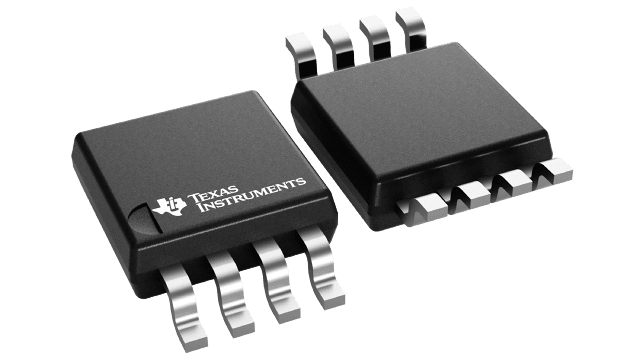Texas Instruments
LM95235DIMMX/NOPB
LM95235DIMMX/NOPB
Couldn't load pickup availability
LM95235DIMMX/NOPB Texas Instruments - Yeehing Electronics
±0.75°C remote & local temperature sensor with SMBus, beta compensation for 65/90n
Pricing (USD)
| Quantity | Unit Price |
| 1 — 99 | 2.721 |
| 100 — 249 | 2.384 |
| 250 — 999 | 1.672 |
| 1,000 + | 0.94 |
The above prices are for reference only.
Specifications
| Manufacturer | Texas Instruments |
| Product Category | Board Mount Temperature Sensors |
| RoHS | Y |
| Minimum Operating Temperature | - 40 C |
| Maximum Operating Temperature | + 90 C |
| Mounting Style | SMD/SMT |
| Package / Case | VSSOP-8 |
| Packaging | Reel |
| Series | LM95235 |
| Brand | Texas Instruments |
| Product Type | Temperature Sensors |
| Factory Pack Quantity | 3500 |
| Subcategory | Sensors |
For more information, please refer to datasheet
Documents
| LM95235DIMMX/NOPB Datasheet |
More Information
The LM95235 is an 11-bit digital temperature sensor with a 2-wire System Management Bus (SMBus) interface and TruTherm technology that can monitor the temperature of a remote diode as well as its own temperature. The LM95235 can be used to very accurately monitor the temperature of external devices such as microprocessors, graphics processors, or a diode-connected MMBT3904 transistor. For automotive applications the LM95235Q is available that is AEC-Q100 Grade3 compliant and is manufactured on an Automotive Grade Flow. TruTherm BJT (transistor) beta compensation technology allows the LM95235 to precisely monitor thermal diodes found in 90 nm and smaller geometry processes. LM95235 reports temperature in two different formats for +127.875°C/-128°C range and 0°C/255°C range. The LM95235 T_CRIT and OS outputs are asserted when either unmasked channel exceeds its programmed limit and can be used to shutdown the system, to turn on the system fans, or as a microcontroller interrupt function. The current status of the T_CRIT and OS pins can be read back from the status registers via the SMBus interface. All limits have a shared programmable hysteresis register.

